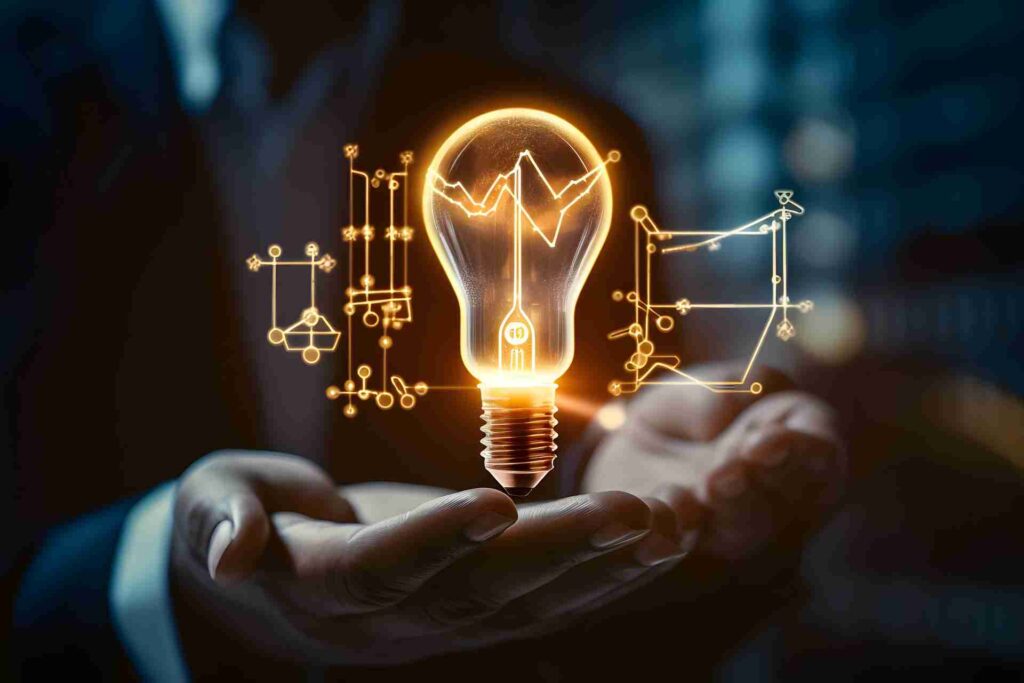The widespread scepticism among patent attorneys towards current AI tools is not unfounded. The legal tech market promotes a narrative of urgent adoption of their off-the-shelf products. However, the current software solutions on offer generally fail to grasp or account for the nuanced, industry-specific challenges that define modern patent practice, particularly in complex fields like life sciences. However, once the need for technical specialism is accounted for and incorporated into sector-specific AI solutions, it is clear that AI has considerable value to offer the industry.
At Evolve, we believe AI’s true value for the legal profession lies in specialised tools built upon attorney expertise. The Evolve approach to AI is built on this principle. We combine our extensive domain knowledge in pharmaceutical IP with practical AI development to create in-house solutions that enhance quality and deliver real value for our clients.
Beyond the generic: The need for technical specialism in AI patent tools
As patent professionals, we are currently bombarded with marketing telling us that Large Language Models (LLMs) are poised to significantly disrupt the legal sector. We are told that we need to urgently buy one or more AI patent drafting or prosecution software solutions or risk being left behind. Yet, outside of the LinkedIn echo chamber, there remains considerable scepticism within the patent industry. Many patent attorneys still use no form of AI in their daily practice, or they have tried one or more tools and found them inadequate and expensive. At Evolve, our belief is that the ultimate utility of AI tools of the patent industry is highly contingent on their domain-specific optimisation. We also believe that the exciting potential of these tools lies not in the mere speeding up of existing tasks, but in identifying areas of patent practice in which AI can enhance quality in addition to efficiency to ultimately provide more value to clients.
One size fits none
The practice of patent law is constantly evolving in line with the technology that it seeks to protect. Historically, when the patent landscape was dominated by mechanical inventions, a generalist approach was generally considered sufficient. However, the proliferation of complex technologies in the latter half of the twentieth century onwards has necessitated a shift towards deep subject-matter specialisation in fields such as biotechnology and software. For these technology areas, a granular and expert-level comprehension of the foundational science is a prerequisite for providing effective patent advice and securing robust protection.
The requirement of subject-matter specialism extends beyond the technology itself. Field specific expertise in the legal and commercial frameworks that govern innovation in each sector is also essential for effective IP strategy. The patentability criteria and strategic IP considerations for software, for example, are fundamentally different from those applicable to pharmaceuticals. This requirement for specialisation is reflected in the composition of the profession. Within the life sciences, it is common for patent attorneys to have a PhD in their area of specialism. Indeed, the in-house IP departments of large pharmaceutical companies are typically separated into dedicated chemistry and biology teams. This structure acknowledges the disparate scientific principles, distinct legal precedents, and unique commercialisation pathways associated with different therapeutic modalities.
However, despite the clear need for subject-matter specialisation in the patent profession, most current AI tools remain generalist. We are now awash with companies claiming to provide LLM-based software capable of assisting with patent drafting and prosecution. But these tools largely lack subject-matter specialisation. As a result, the tools on offer are generic. It is left to the user to incorporate the necessary domain-specific knowledge, dramatically reducing any purported efficiency gains. What you are left with is an expensive user interface.
Lost in translation: why pharmaceutical IP is different
As pharmaceutical IP specialists, at Evolve we see that the problem with many third-party AI-software offerings is particularly acute for the life sciences. Patents in the life sciences field are simply very different to those in the mechanical and software fields. The process of drafting and prosecuting patents in life sciences is correspondingly also very different.
In pharmaceuticals, the focus is very much on the data and how this supports the claims. Sufficiency and the evidence needed to support an inventive step are often the most important considerations. These issues will determine the all-important question of when to file and what scope of protection you will be able to achieve. In contrast, sufficiency and the standard of evidence required are very rarely issues for mechanical applications (just watch the eyes of mechanical patent attorneys glaze over at any mention of “plausibility”). The patent claims themselves in life sciences also require very domain-specific details about the drug modality. Drafting claims covering inventions relating to Markush Formula for small molecule pharmaceuticals, sequences of biological molecules and the even more complex field of cell and gene therapy, requires considerable scientific, legal and industry expertise in these technical fields.
These issues apply equally to prosecution as they do to the drafting process. Prosecution responses in the life sciences industry are often primarily focused on interpretation of the data, and corresponding support and enablement issues. An AI tool designed to argue the novelty and inventive step of mechanical inventions based on the addition of a widget is likely to produce highly irrelevant arguments for prosecuting claims for a monoclonal antibody.
LLMs are trained to be generalist
The inability of the current AI software patent tools to cope effectively with complex technology is unsurprising given the universal reliance of these tools on foundational LLMs. Most of the existing tools rely on the underlying LLM to do most of the work, with little to no additional optimisation for specific technical fields. The advantage of foundational LLMs is, of course, that they are trained on vast quantities of data from the internet. LLMs therefore do know something about patents, as they have access to all the published patents and patent applications available on Google Patents. On top of this training, LLMs have also been fine-tuned by Reinforcement Learning from Human Feedback (RLHF) (i.e. human directed optimisation of the output) to be excellent at producing nicely structured, readable and appropriate language.
However, the training process behind LLMs produces two problems for patents. Given the relatively low barrier to filing a patent application, the internet is full of a vast quantity of low-quality and variable patent data. Very few patents are litigated. There is thus a corresponding lack of data as to what actually makes a good patent for LLMs to learn from, especially as to what makes a good patent in any particular industry.
Additionally, LLMs lack the practical knowledge of patent drafting and prosecution that comes from years of attorney experience. This is the nuanced, context-specific knowledge that is not written down in legal texts, academic commentary or blog posts.
Exacerbating the problem is the fact that the RLHF applied to LLMs trains the models to optimise and prioritise clarity and ease of reading when generating text. When given any instructions, producing a readable output is an overarching priority of most foundational models that will often override even the most explicit instructions. LLMs aim to produce text that reads nicely and is easy to parse. However, as all patent attorneys know, nicely written text that is easy to read is not the priority for patent drafting or prosecution. In drafting, it is much more important, for example, to ensure that you have sufficient basis for all the possible ranges and combinations of features that you might need as back-up claims. In prosecution, it will be more important not to introduce or lose subject-matter when amending the claims. LLMs don’t know this, however, because no one bothers writing this down.
To illustrate the point, consider asking your favourite LLM (ChatGPT, Gemini, Claude, Le Chat, etc) to find basis for a claim amendment according to the EPO’s strict “gold standard”. The EPO gold standard is a notoriously strict test at the EPO (Evolve Insights). No foundational LLM will be very good at this task without extensive and sophisticated instructions from an experienced patent attorney. The concept of basis is highly complex, nuanced and in some respects counterintuitive to how an LLM might normally interpret text. As such, without careful and expert prompting, an LLM will find what it considers to be “basis” according to its own rules, which are unlikely to correspond to the legal requirements for finding direct and unambiguous disclosure. An LLM is also likely to be confused by jurisdictional differences, potentially applying the more lenient US law to an EPO question.
Notably, the foundational LLM labs are aware of the issue of domain-specific problems that trouble their models. Many of these labs are seeking to recruit industry experts, e.g., lawyers, who can help train the systems to deal with domain-specific tasks. However, patent drafting and prosecution are likely to be rather far down on the list of domain-specific tasks to optimise compared to the rest of the legal industry, let alone the entire commercial world of domain-specific technical tasks.
So, where does this leave us for using LLMs in the patent industry? LLMs can undoubtedly be powerful assistants for attorneys, but only when used in conjunction with sophisticated and domain-specific AI prompting and workflows. Crucially, these must be developed by patent attorneys who combine deep technical expertise and experience of patent practice in the relevant area. Only then will they be able to provide value.
The Evolve approach
At Evolve, we understand both the opportunities and limitations of LLMs and LLM-based AI patent software. As an agile firm devoted to the single technical field of pharmaceuticals, we can combine our deep domain knowledge of life science patents with our practical experience developing our own in-house AI solutions for the unique requirements of the pharma sector. This approach allows us to tailor the tools we use specifically to the needs of our clients and the unique challenges of our field. We are also focused on using AI in a way that will truly add value to our clients.
Case study: The Evolve AI Basis Validator
At Evolve, we have developed in-house a comprehensive domain specific basis checker that follows the EPO gold standard for added matter. Added matter remains one of the most successful grounds for opposition and revocation of EPO patents. The loss of a single comma, or the adjustment of a single feature from the original claims, may invalidate a patent. This is clearly a situation where AI can add value. The Evolve basis checker will find and score the basis for every single claim feature and provide these together with a confidence score of its own assessment. Any issues identified by the Evolve AI Basis Validator can then be reviewed and addressed by an attorney. Importantly, the Evolve AI Basis Validator is not a replacement for an attorney’s own basis assessment, it is an additional tool in the toolbox that provides added security, e.g. that your composition of matter patent for your blockbuster drug product is secure from an added matter attack. Evolve’s AI tools are designed to be additions to our existing workflows that improve quality and ultimately provide more value for clients.
Final thoughts
Building our own in-house tools has only reinforced for us that domain-specific knowledge is essential for any AI-patent tools that will truly add value. Highly sophisticated prompts, based on expert practical knowledge and experience, are needed. Only then do these tools become truly useful. Once you have this, they become a driver of value and enhance the work product.
If you would like to hear more about how we are leveraging AI technology to secure robust patent protection for our clients, or would like to discuss potential collaborations, please contact a member of our team, we would love to hear from you!







